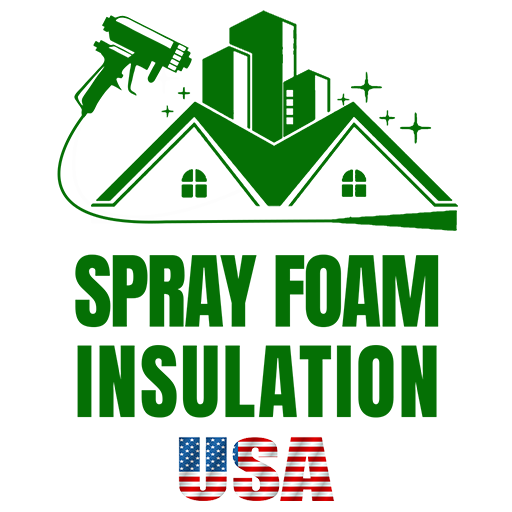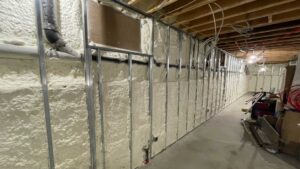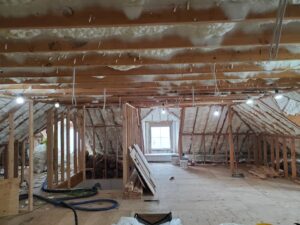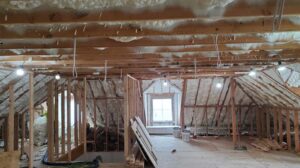Introduction
When it comes to keeping your home comfortable and energy-efficient, understanding R-value is crucial. If you’re quickly looking to grasp what R-value means for your home’s insulation, here’s the key point: R-value measures the insulation’s ability to resist heat flow. The higher the R-value, the better that material is at insulating. This means less heat escapes during the winter and less heat enters during the summer, leading to lower energy bills and a more comfortable home environment.
Insulation plays a vital role in any home. It acts like a thermal barrier, managing the indoor climate and directly impacting energy consumption and comfort. Proper insulation, with the right R-value, helps maintain a consistent temperature, reduces energy usage, and can even help soundproof your home. Whether you’re building a new home or upgrading your current one, selecting the correct insulation R-value is a significant step in enhancing overall home efficiency.

Understanding R-Value
When we talk about insulation, R-value is a key term that pops up. It’s all about how well insulation can stop heat from moving in or out of your home. Let’s break it down into simple parts: heat flow resistance, thermal performance, and measurement units.
Heat Flow Resistance
The R-value is essentially a measure of insulation’s ability to resist the flow of heat. Think of it like a barrier that keeps your home warm in the winter by trapping heat inside, and cool in the summer by blocking heat from entering. The higher the R-value, the better this barrier performs.
Thermal Performance
The performance of insulation is directly linked to its R-value. Higher R-values mean better insulation properties, which translates to more effective temperature control inside your home. This can significantly reduce your heating and cooling costs because your HVAC system won’t have to work as hard to maintain a comfortable environment.
Measurement Units
R-value is measured in terms of thermal resistance. In the U.S., it’s typically expressed as ft²·°F·h/BTU. This means for each degree of temperature difference across the insulation, a certain amount of heat will pass through each square foot of material per hour. The formula used is quite straightforward:
- R-value = Temperature Difference ÷ Heat Flux
This unit of measurement helps homeowners understand the efficiency of an insulation material in a quantifiable way.
By choosing insulation with the right R-value for your home, you’re not just saving money on energy bills; you’re also enhancing the comfort and livability of your space. Different parts of your home might need different R-values based on exposure to elements and structural design.
In the next section, we’ll explore recommended R-values based on climate zones and other factors to help you make the best choice for insulating your home.
Recommended Home Insulation R-Values
When it comes to insulating your home, not all areas require the same level of insulation. This is where understanding R-value recommendations based on climate zones, retrofitting needs, and IECC (International Energy Conservation Code) guidelines becomes crucial.
Climate Zones
The United States is divided into several climate zones, each with unique characteristics that impact the type of insulation needed:
- Zones 1-3 (Hot): These zones require lower R-values due to their warmer climates. For example, Zone 1 might only need R30 in the attic.
- Zones 4-5 (Moderate): These areas experience a broader range of temperatures. Recommended R-values increase, such as R49 for attics.
- Zones 6-8 (Cold): In these colder climates, higher R-values are crucial. Zone 6 and above might require up to R60 in the attic to maintain warmth.
Retrofitting Existing Homes
Retrofitting insulation in existing homes can significantly improve energy efficiency. Here’s what you might consider:
- Attics: If you have no insulation, adding up to the recommended R-value (e.g., R49 in Zone 3) can prevent heat from escaping.
- Floors and Walls: Adding insulation like R25 to floors and increasing wall insulation can block cold air intrusion, especially in basements and crawlspaces.
IECC Guidelines
The IECC guidelines provide a structured approach to determining the right R-values for various parts of a building, ensuring compliance with energy conservation standards. For instance, the 2021 IECC recommends specific R-values for new constructions and retrofits based on your climate zone.
Why follow these guidelines?
- Energy Efficiency: Proper insulation levels as per IECC guidelines help reduce energy consumption, lowering utility bills.
- Comfort: Correct insulation keeps your home comfortable throughout the year, regardless of external temperatures.
- Environmental Impact: Using the recommended R-values contributes to lower carbon emissions.
Implementing Recommendations
Here’s how you can use this information:
- Identify Your Climate Zone: Check the IECC zone map to determine which zone your home is in.
- Assess Your Current Insulation: If you’re retrofitting, see if your current insulation meets the recommended R-values for your zone.
- Upgrade Accordingly: If your insulation is lacking, consider upgrading to meet or exceed the recommended R-values. For areas like attics and floors, higher R-values mean better heat retention.
By selecting the right R-value based on these guidelines, you ensure that your home is not just insulated, but optimally insulated for your specific environmental conditions.
In the next section, we’ll dive into practical tips on how to improve your home’s insulation, from attic upgrades to innovative products like Spray Foam Insulation USA, ensuring that every corner of your home is energy-efficient and comfortable.
How to Improve Your Home’s Insulation
Improving your home’s insulation is a crucial step towards energy efficiency and comfort. Let’s explore how you can enhance insulation in key areas such as the attic and floors, and why choosing products like Spray Foam Insulation USA can make a significant difference.
Attic Insulation
The attic is often the primary source of heat loss in a home. Effective attic insulation can prevent heat from escaping in the winter and keep your home cooler in the summer. Here are simple steps to better insulate your attic:
- Seal Air Leaks: Before adding new insulation, seal any gaps with caulk or foam spray to prevent air leakage. This step is crucial as it stops warm air from escaping.
- Choose the Right Insulation: Depending on your climate, select insulation with the appropriate R-value. Higher R-values are better for colder regions. Materials like fiberglass batts are common, but you can achieve superior results with materials that cover more area and have fewer gaps.
- Install Radiant Barriers: In hotter climates, consider installing a radiant barrier along with the insulation to reflect heat away from your home.
Floor Insulation
Insulating your floors can prevent cold feet in the winter and help maintain a consistent temperature throughout your home. Here’s how to insulate your floors effectively:
- Check the Existing Insulation: If you have access to under-floor spaces, check the condition of any existing insulation. Look for dampness or damage and replace as necessary.
- Use Spray Foam: For areas that are hard to reach or have irregular spaces, spray foam insulation from Spray Foam Insulation USA can provide a high R-value and excellent coverage.
- Consider the Material: Options like fiberglass, foam boards, and reflective insulation are available. Choose based on your specific needs and the R-value required.
Spray Foam Insulation USA
Using products from Spray Foam Insulation USA offers several advantages:
- Superior Coverage: Spray foam expands to fill gaps, providing an airtight seal that significantly reduces air leakage.
- High R-Value: Spray foam typically has a higher R-value per inch compared to other forms of insulation, meaning better thermal resistance.
- Moisture Barrier: This insulation type also helps in reducing moisture ingress, which is critical in preventing mold growth and wood rot.
By focusing on these areas and choosing the right products, you can significantly enhance your home’s insulation. The goal is to not just insulate, but to do so effectively with the highest possible R-value you can achieve for your specific climate and home structure. This approach ensures not only a reduction in energy bills but also an increase in comfort and a decrease in environmental impact.
In the following section, we will answer some frequently asked questions about R-values to help you better understand how to optimize your insulation efforts.
Frequently Asked Questions about R-Values
Is a Higher R-Value Always Better?
When it comes to insulation, a higher R-value does mean better resistance to heat flow, which sounds ideal. However, it’s not just about picking the highest number. Cost vs. efficiency is a crucial factor. Higher R-value materials often cost more, and at some point, the extra cost might not justify the minimal energy savings.
Climate considerations also play a big role. In milder climates, extremely high R-values won’t be as beneficial as they would be in colder regions. It’s like wearing a heavy winter coat in mild weather—it’s not only unnecessary but can be uncomfortably warm.
What Does an R-Value of 3.1 or 4.5 Mean?
An R-value of 3.1 or 4.5 represents the material’s thermal resistance. Simply put, it tells you how good the material is at slowing down heat flow. A higher number means better insulation.
Seasonal usage affects how you interpret these values. For instance, in cold winters, a higher R-value helps keep heat inside, making your home cozy. In hot summers, it prevents outside heat from warming up your home, keeping it cooler.
What is the Highest R-Value and How to Achieve It?
The highest R-values are found in materials like vacuum insulated panels and aerogel, boasting R-values around R-45 and R-10 to R-30 per inch, respectively. These materials use advanced technology to achieve such high levels and are typically used in specialized applications.
Polyurethane foam is more commonly used in residential settings and offers a high R-value (around R-6 to R-7 per inch) compared to other more traditional materials. It’s a great choice for maximizing insulation in limited spaces.
To achieve the highest R-value in your home, consider using a combination of these materials. For example, using polyurethane foam for broad coverage and supplementing it with vacuum insulated panels in areas where space is limited or where you need extra insulation.
By understanding these aspects, you can choose the right insulation material and thickness for your needs, ensuring comfort, efficiency, and cost-effectiveness. Next, we’ll explore how to apply this knowledge practically to enhance your home’s insulation.
Conclusion
As we wrap up our guide on R-value and insulation, it’s clear that understanding and optimizing the insulation in your home is not just a technical necessity—it’s a pathway to tangible benefits that enhance your everyday living. Let’s delve into how these improvements translate into energy savings, increased comfort, and sustainable living.
Energy Savings
One of the most impactful benefits of proper insulation is the significant reduction in energy consumption. By enhancing the R-value of your home’s insulation, especially in key areas like the attic, you create a barrier that effectively slows down heat transfer. This means your heating and cooling systems don’t have to work as hard to maintain a comfortable indoor temperature, leading to lower energy bills. In fact, upgrading your attic insulation can cut heating and cooling costs by up to 15%, a saving that not only benefits your wallet but also extends the lifespan of your HVAC system.
Comfort Improvement
Beyond the numbers on your energy bill, the right insulation directly impacts your living environment. Homes with high R-value insulation maintain more consistent temperatures, reducing the occurrence of drafts in winter and excessive heat in summer. This stability means your home is not just a building, but a sanctuary tailored to your comfort. Moreover, high-quality insulation materials like those offered by Spray Foam Insulation USA enhance soundproofing, contributing to a quieter, more serene home atmosphere.
Sustainable Solutions
Choosing the right insulation also plays a crucial role in reducing your ecological footprint. By optimizing energy use, you contribute less to the consumption of non-renewable resources and the emission of greenhouse gases. Furthermore, materials like spray foam, which we specialize in, often contain eco-friendly components that minimize environmental impact without compromising on performance. This approach not only insulates your home but also supports a healthier planet.
In conclusion, improving your home’s insulation with the right R-value is an investment in energy efficiency, comfort, and sustainability. By selecting high-quality materials and focusing on key areas, you can enjoy a warmer home in the winter, a cooler retreat in the summer, and peace of mind knowing you are contributing to a more sustainable world. Every step towards better insulation is a step towards a better future.





